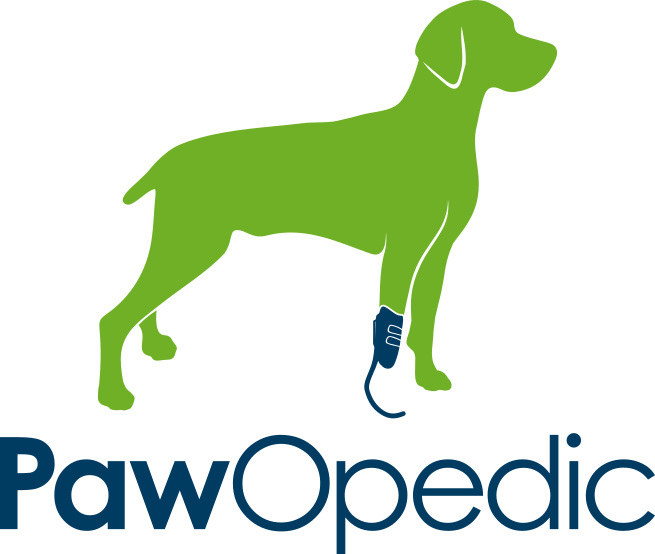Achilles Tendon Ruptures and Bracing in Dogs
Bilateral Achilles Injury Unbraced
Bilateral Achilles Injury Braced
Achilles tendon ruptures are most commonly caused by lacerations, blunt force trauma, or overstretching of the area. Ruptures of the tendon can also be chronic and degenerative in nature. Achilles injuries can be seen in any breed of dog although Labrador Retrievers and Doberman Pinschers are most common1. The Achilles tendon, also known as the common calcaneal tendon, is really three different tendons which include the superficial digital flexor tendon, gastrocnemius tendon, and the common tendon of the biceps femoris, gracillis, and semitendinosus muscles 2.
Achilles injuries can present themselves in various ways. Some dogs will show lameness on the injured limb side which may be coupled with swelling or thickening around the affected area. Dogs with complete ruptures will walk flat-footed while the digits may be curled or flexed downward. Partial ruptures may present with a somewhat flexed leg. Treatment options vary depending on the severity of the injury and may include surgery, bracing, and newer modalities such as stem cell treatment 2.
Normal Tarsus vs. Dropped Tarsus with Flexed Digits
How Does it Work? The Achilles tendon complex is a main stabilizer of the lower hindlimb. A partial or full tear of this tendon will diminish the effect of the stabilizing muscles that feed into it, leading to the full or partial collapse of the limb. The PawOpedic Custom Tarsal Orthosis can help restore stability for unrepaired ruptures and can also be used postsurgically as a protective measure.
The video below demonstrates injury of the Achilles tendon and the use of a custom PawOpedic Tarsal orthosis for the first time. (The sport version of the orthosis can also be fabricated without the paw encapsulated to allow for a more natural gait.)
Canine achilles brace, before and after brace first time use.
Figure 1. Comparison of normal Achilles tendon, partially torn, fully torn, and braced.
Evans HE, de Lahunta A. The skeletal and muscular systems. Miller's Guide to the Dissection of the Dog. Fourth ed. Philadelphia: WB Saunders, 1996;6-118.




